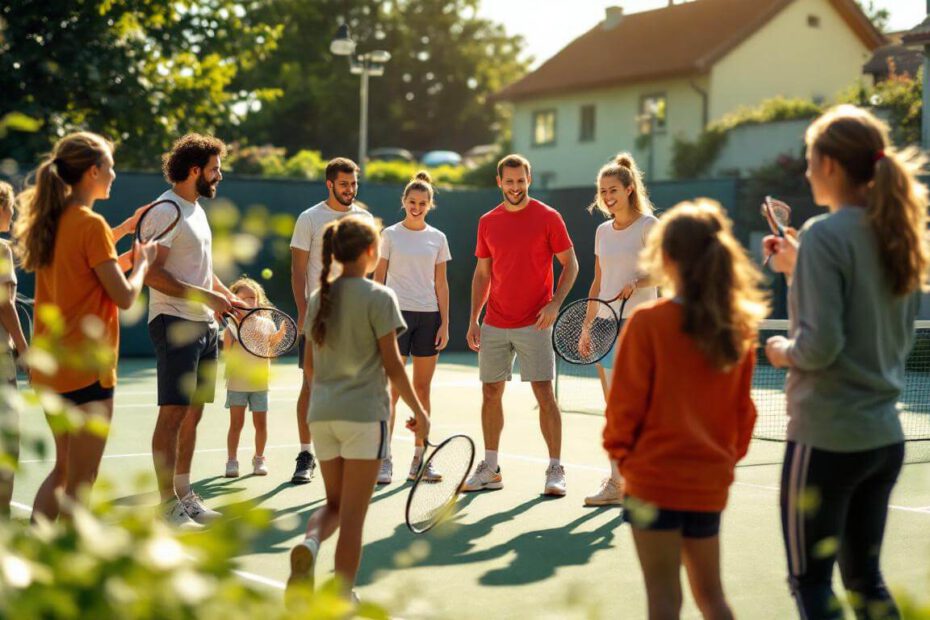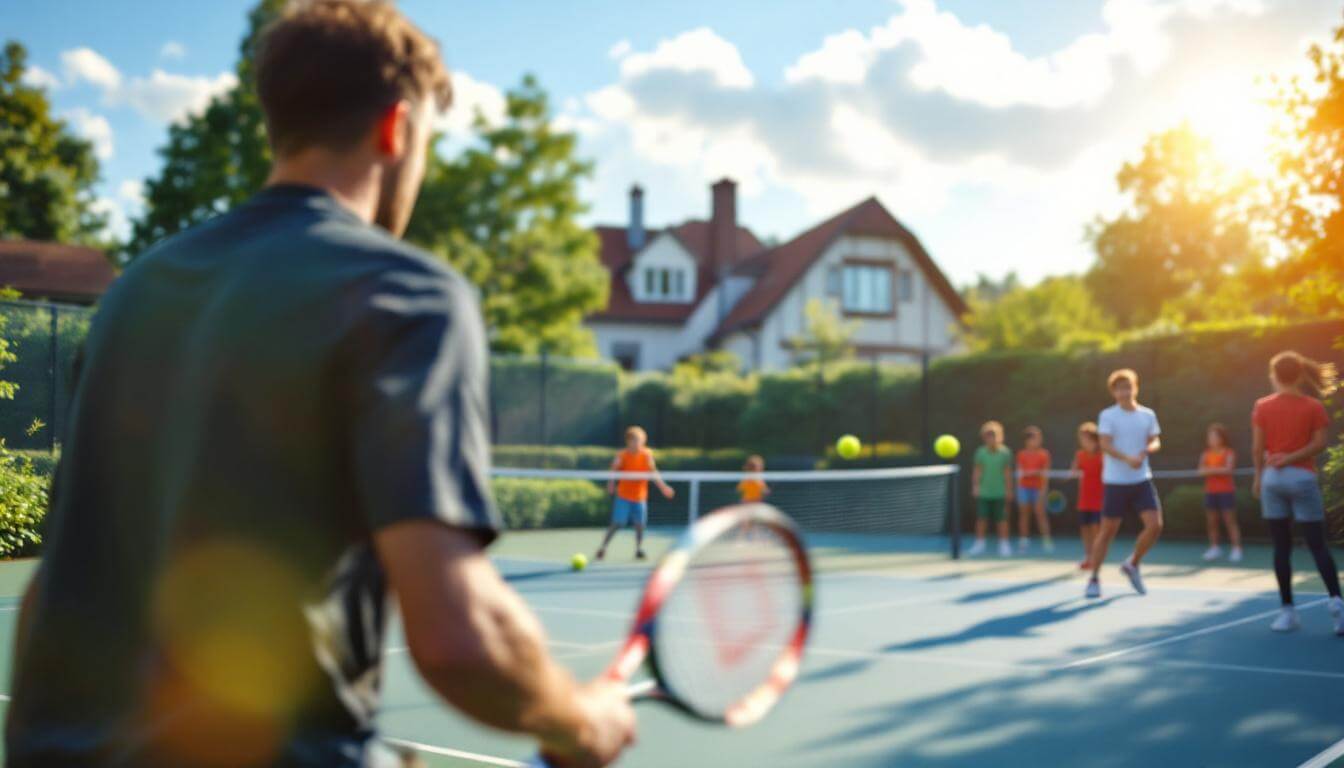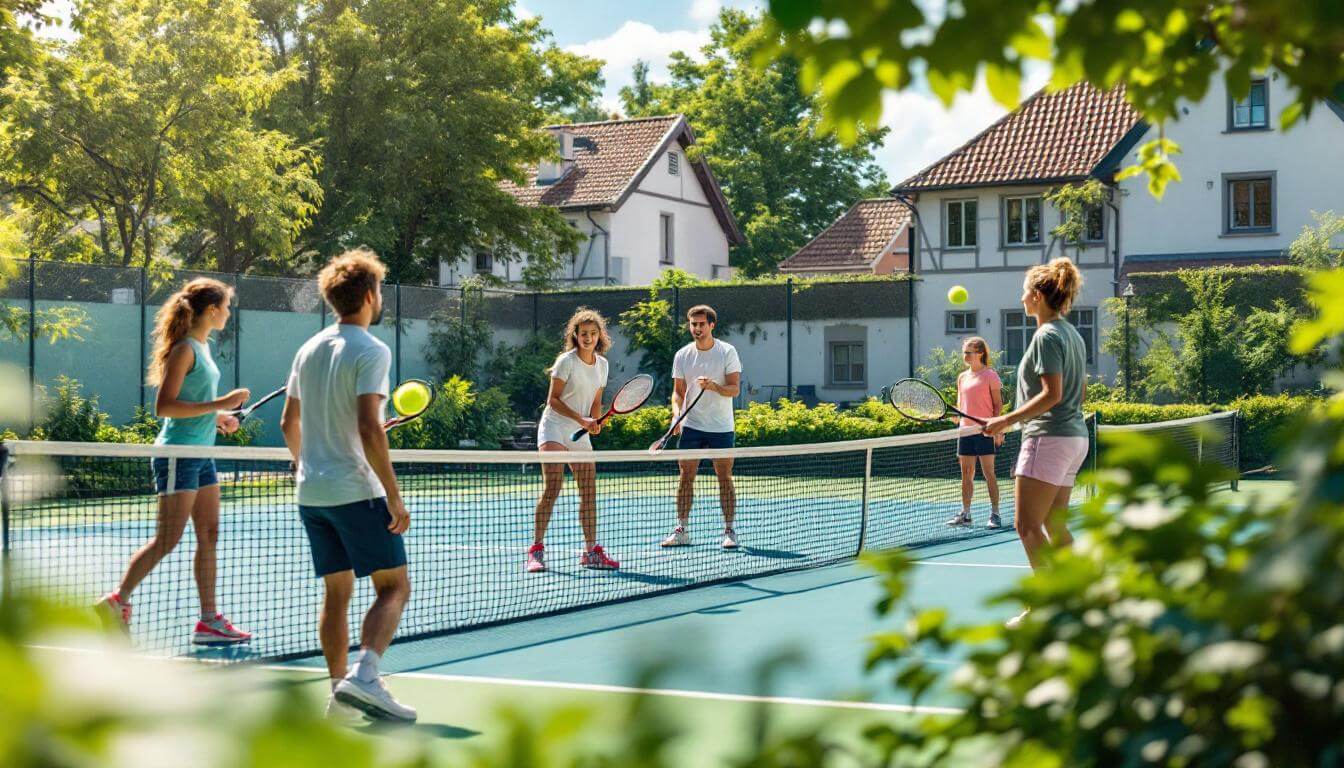Estimated reading time: 8 minutes
Key Takeaways
- No clear positioning means no efficient acquisition: Define target audiences, value propositions, and segments before selecting channels and campaigns.
- Integrate online and offline measures: Combine website, social media, and ads with local partnerships, events, and recommendations.
- Use lead magnets (trial lessons, checklists) to generate contacts and follow up systematically.
- Automate booking and communication: Reduce friction in inquiries, scheduling, and payment to achieve more conversions.
- Manage your growth with KPI such as lead-to-student rate, CAC, and occupancy – and optimize what works.
Table of Contents
- Introduction
- Target Audience Analysis and Positioning
- Online Marketing Strategies
- Local Acquisition & Partnerships
- Offers, Pricing Models & Customer Journey
- Processes, Tools & Automation
- KPIs & Controlling
- Conclusion
- FAQ
Introduction
Attracting new students for your tennis school is critical for coaches and academies to secure occupancy, planning reliability, and growth.
Continuous student acquisition is vital to cover ongoing costs and advance the development of the offerings. The market for tennis schools is dynamic: Increasing competition and high expectations for flexibility, quality, and transparency shape the environment.
Good acquisition is not a coincidence but the result of a clear system of positioning, suitable offerings, and consistent implementation.
At the same time, digital channels combined with local networking offer significant opportunities. This way, you can address new target groups and build long-term bonds—such as with these guides: 8 Ways to Market Your Tennis School and this overview of Digital Marketing.
In this article, you will receive practical strategies for acquiring new students for your tennis school—both online and offline. For a deeper dive, you can find more here: Student Acquisition in the Tennis School: Strategies. You will get checklists, templates, and KPIs to help you planably grow as a tennis coach. The marketing of your tennis school will thus become systematic and measurable.
Target Audience Analysis and Positioning
Sharpen Market Focus for Efficient Student Acquisition
The goal is clear: All measures should efficiently contribute to attracting new students for your tennis school.
A thorough target audience analysis lays the foundation (see Tips for the Efficient Organization of Your Tennis School). Here, you systematically capture demographic characteristics such as age and region—ideally supported by Statista data on tennis participation. Psychographic factors such as motivation and values, as well as behavioral aspects like booking methods and media usage, are also important, e.g., with suggestions from Increasing Productivity as a Tennis Coach.
The right positioning gives your tennis school a clear place in the market. Develop a unique value proposition (USP) that measurably distinguishes you from your competitors and specifically appeals to new students. Example: “Flexible evening classes for working beginners with quick progress checks.”
Market Segmentation by Age Groups and Skill Levels
Age Groups:
- Children (6–12 years)
- Teens (13–17 years)
- Adults (18–45 years)
- Seniors (45+ years)
Skill Levels:
- Beginners without prior experience
- Intermediate with basic knowledge
- Competitive players with tournament ambitions
Regional Specificities:
- School districts near you (Marketing your tennis school locally)
- Neighborhoods and commuter flows
- Accessibility by car or public transport
Understand and Systematically Assess Needs
The key motives for tennis are diverse:
- Fun and personal development
- Fitness and health
- Making social connections
- Flexible training times
- Transparent pricing
- Safety (especially for children)
- Success in tournaments (for competitive players)
Methods for Assessing Needs:
- Short online surveys (5–7 minutes) using Google Forms
- Phone interviews with prospects
- Focus groups for each segment
Example question: “What currently prevents you from taking a tennis course?”
Online Marketing Strategies
Online channels are the fastest way to build visibility and generate inquiries. Important: Each measure should aim for a clear conversion (e.g., book a trial lesson).
- Website as a Conversion Hub: Clear homepage, overview of services, prices, coach profiles, social proof (reviews), visible CTAs like “Book a Trial Lesson”.
- Local SEO Optimization: Optimize for search terms like “tennis school + city,” structure course pages by segments, use Schema.org for courses/organizations.
- Google Business Profile & Reviews: Up-to-date photos, course times, Q&A, actively solicit and respond to reviews.
- Social Media with Community Focus: Show snippets of training, success stories, testimonials from parents. Use reels/shorts and tag clubs as well as local partners.
- Paid Ads (Meta/Google): Campaigns for each segment (children’s courses, beginners, 40+), with landing pages, location targeting, and appointment CTAs.
- Content & Lead Magnets: Blog/downloads like “Tennis Starter Guide,” “Racket Checklist.” Download in exchange for email – followed by nurturing sequence.
Tip: Track every inquiry (form, phone, WhatsApp) in a list or CRM and assign a clear lead source to evaluate channels cleanly later.
Local Acquisition & Partnerships
Offline wins when you create closeness and build trust. Presence on-site converts particularly families and beginners with personal outreach.
- School Partnerships: AGs (after-school activities), trial days, holiday camps. Arrange information sheets to be distributed to the parents via the schools.
- Clubs & Gyms: Mutual recommendations, packages like “Fitness + Tennis beginner course”.
- Events & Open Days: Mini-workshops, racket rentals, contests with lead sheets or QR codes leading to landing pages.
- Referral Program: “Bring-a-Friend”: Both receive a free session or 10% off the next course.
Always combine local actions with digital tracking (QR codes, forms) to ensure no contact is lost.
Offers, Pricing Models & Customer Journey
A clearly defined path from first contact to booking significantly increases your conversion rate.
- Trial Lesson & Assessment: Low entry barrier, fixed slots, immediate feedback with course recommendation.
- Clear Packages: Beginner course (6 weeks), technique bootcamp (4 weeks), competition program – each with transparent pricing.
- Communicate Flexibility: Rescheduling, make-up appointments, weather-related alternatives (indoor/video analysis).
- Onboarding: Welcome email, course agenda, equipment tips, group chat – this increases retention and participation rates.
Processes, Tools & Automation
Standardized processes save time and increase the closing rate. The aim is a seamless customer journey from inquiry to payment.
- Unified inquiry form with segment selection (age, level, times) and automatic confirmation email.
- Online booking calendar with immediate scheduling for trial lessons.
- Email workflows: Reminder, follow-up, offer, feedback request after 7 days.
- Template library: Offer PDFs, course agenda, parent FAQ, T&Cs – saves valuable minutes per lead.
KPIs & Controlling
Measure what works – and invest specifically where you achieve the best return.
- Leads per channel: Website, social ads, referrals, schools, events.
- Lead-to-Student Rate: Conversions / Leads. Compare by segment and offering.
- CAC (Customer Acquisition Cost): Marketing costs / acquired students. Decrease through better audience matching and automation.
- Occupancy per course/coach: Early warning signal for under/overbooking; manage with waiting lists and additional dates.
Practical Quick-Check: If a channel generates many clicks but few bookings, there is usually an issue with the landing page or the offering – test different titles, proof (testimonials), prices, or time slots.
Conclusion
Sustainable student acquisition is achieved when positioning, offerings, channels, and processes work seamlessly together. Start small, but measurable: Define one segment, one offering, one landing page, and one acquisition channel – optimize weekly based on your KPIs. This way, your tennis school grows in a planable manner.
FAQ
How many marketing channels should I focus on at the beginning?
Focus on 1–2 core channels (e.g., local SEO + social ads) and a strong landing page. Scale only when you are measurably generating leads and conversions.
What content works best for beginners?
Short videos with basics, success stories from real participants, transparent price and course overviews, and the option to book a trial lesson immediately.
How can I cushion fluctuations in demand (season)?
Plan seasonal packages, offer indoor alternatives and winter programs, maintain waiting lists, and communicate early bird discounts for the next season.
How can I get more reviews and social proof?
Actively request feedback after each course completion, send review links via email/WhatsApp, and include the best quotes with consent on your website.
What key metrics are most important for small tennis schools?
Leads per channel, lead-to-student rate, CAC, occupancy per course, and rebooking rate. With these KPIs, you can effectively manage acquisition, capacity, and profitability.



